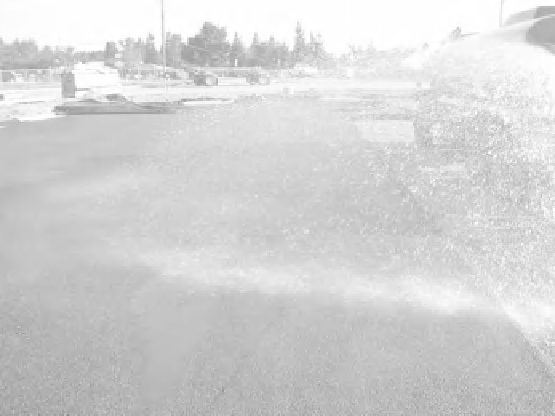Environmental Engineering Reference
In-Depth Information
Figure 8-6
Permeability testing of porous pavement with water truck, Kaiser-Permanente
Hospital, Modesto, California.
kept off the bed bottom as much as possible. Once bed aggregate is installed
to the desired grade, a
±
1-in. layer of choker base course (AASHTO 57 or
equivalent) aggregate is installed uniformly over the surface to provide an even
surface for paving.
7. Install pervious pavement. After final pervious asphalt or concrete installa-
tion, no vehicular traffic of any type is permitted on the pavement surface until
cooling and hardening or curing has taken place, and in no case within the first
72 hours.
8. The full permeability of the pavement surface is tested by application of
clean water at the rate of at least 5 gal/min over the surface using a hose or other
distribution devise (Figure 8-6). All water applied must infiltrate directly without
puddle formation or surface runoff.
Operation and Maintenance
While porous pavement does not require any type of “operation” in a typi-
cal engineering sense, it does warrant periodic inspection to assure continued
performance. The primary goal of pervious pavement maintenance is to prevent
the pavement surface and/or underlying infiltration bed from being clogged with
fine sediments. To keep the system clean throughout the year, and to prolong its
lifespan, the pavement surface should be vacuumed biannually using a commer-
cial cleaning unit. All inlet structures within or draining to the infiltration beds
should also be cleaned out on a biannual basis.
Planted areas adjacent to pervious pavement should be well maintained to
prevent soil washout onto the pavement. If any washout does occur, it should be












Search WWH ::

Custom Search